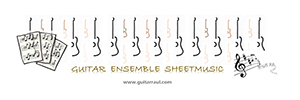Thanh T. Pham
https://kupdf.net/download/francis
Today’s guitar repertory contains centuries of music of various forms and stories. One particular man from Spain has redefined the modern guitar as a serious solo instrument by transcribing music from piano, contributing to the development of technique, composition of music, and furthering pedagogical studies. His name, Francisco Tárrega (1852-1909), is synonymous with the Spanish guitar.1 If one examines the music of Tárrega, different influences from Chopin to the folk music of the Iberian Peninsula utilize and require different performances of particular aspects of the music. Understanding the history also yields information to determine an appropriate affect of the piece. I believe these nuances help bring out the characteristics of and strengthen the affects of Tárrega’s pieces.
How did Tárrega perform his music? What can be learned from how Tárrega performed his music to enrich his music in performance today? Specifically, I will investigate nuances in articulation such as written and unwritten glissando and portamento. First, I reveal the life of Tárrega and some of his influences on music. Tárrega dedicated himself to teaching the practical and theoretical ideas of the guitar. Looking at the music, I determine the affect and character of the piece. Finally, I examine the pieces in detail to determine a possible performance style to bring out the affect, the attitude, of the piece in order for the listener to understand what Tárrega has experienced. Recordings of popular and influential guitarists are studied. Notably, The Complete Historical Recordings 1913-1942 by Augustín Barrios are studied due to the recordings’ proximity of time to Tárrega’s lifetime. The Miguel Llobet recordings are also studied for the same purpose but it is also significant that Llobet was one of Tárrega’s students.
Francisco Tarrega the Story of Capricho Arabe





